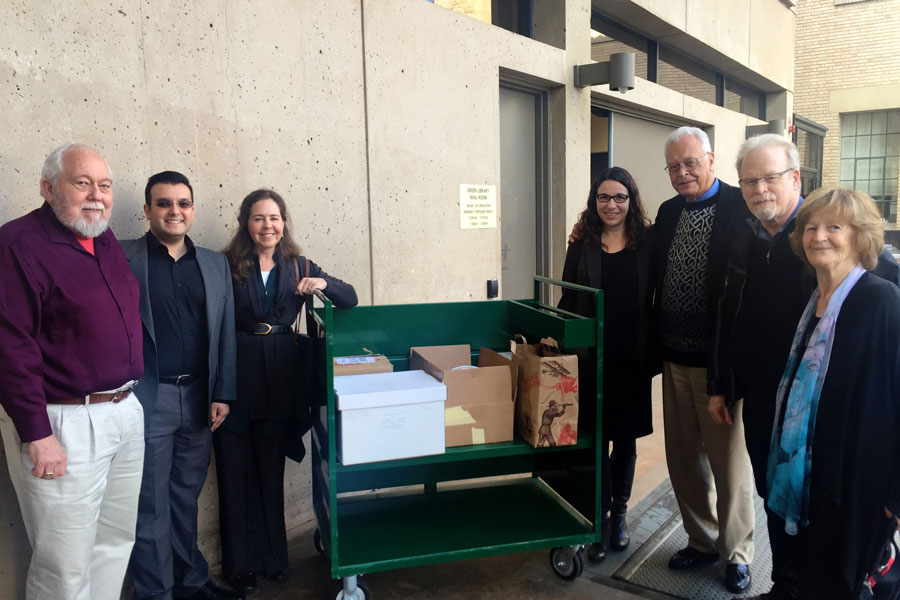In the rich tapestry of Bahá’í teachings, the legacy of Dan Jordan emerges as an instrumental facet in the realm of education, embodying principles that extend far beyond conventional pedagogical frameworks. As we delve into this intricate subject, one might muse—how can an educational philosophy shaped by a singular individual continue to flourish and evolve within contemporary educational institutions like Stanford University? This inquiry prompts not only reflection on Jordan’s contributions but also a critical examination of the challenges faced in the replanting of his educational ethos.
The life and works of Dan Jordan are steeped in the Bahá’í principles of unity, equity, and the transformative power of education. An advocate for holistic learning experiences, Jordan championed a worldview that transcends the mere accumulation of knowledge. Instead, he promoted the cultivation of a deep-seated understanding intertwined with moral and spiritual development. This dual approach underscores the Bahá’í belief that education is not solely an intellectual pursuit but a vital process for personal and communal advancement.
At the heart of Jordan’s educational philosophy lies the idea that learning is a lifelong endeavor. He posited that the acquisition of knowledge must be matched with the application of that knowledge to better society. Through initiatives that emphasized experiential learning, students are encouraged to engage with real-world challenges, thus transforming theoretical concepts into practical solutions. This ethos aligns seamlessly with Stanford’s commitment to experiential education, prompting a synthesis of Jordan’s educational legacy with Stanford’s innovative methodologies.
However, amidst this promising integration, formidable challenges arise. The perennial question remains—how does one preserve the essence of Jordan’s teachings while adapting to an academic environment that is often resistant to change? The rigidity of traditional educational structures may thwart efforts to implement more integrative and collaborative learning strategies. Thus, the confrontation with institutional inertia presents a substantial hurdle for educators seeking to embrace and propagate Jordan’s holistic vision.
Another facet of replanting Jordan’s educational legacy is the necessity for engaging a diverse array of stakeholders. The principles of the Bahá’í faith advocate for inclusivity and the active participation of all segments of society. To actualize Jordan’s vision, one must foster collaborations among faculty, students, and the community at large. This creates a rich tapestry of perspectives, enhancing the relevancy and applicability of educational initiatives. However, the coordination of such diverse interests can be convoluted, often leading to conflicting views on curriculum design and pedagogical approaches.
Moreover, assessing the impact of Jordan’s legacy through tangible metrics poses a significant conundrum. Traditional assessment methods might inadequately capture the profundity of a transformative educational experience rooted in spiritual upliftment and moral responsibility. Consequently, there is an urgent need to design assessment frameworks that accommodate alternative forms of evaluation, such as peer reviews and reflective practices, facilitating a deeper understanding of student growth in alignment with Bahá’í principles.
In addressing these multifaceted challenges, a strategic approach is essential. One potential avenue is the creation of interdisciplinary programs that amalgamate the tenets of Jordan’s philosophy with existing Stanford curricula. By developing courses that integrate the moral dimensions of learning with scientific inquiry and social responsibility, students can embrace a holistic educational journey. Such initiatives would not only honor Jordan’s legacy but also invigorate the academic discourse within the university, fostering an environment ripe for innovation.
Furthermore, the establishment of forums for dialogue and collaboration among educators, students, and community leaders can serve as a crucible for the proliferation of Jordan’s ideals. These forums can undertake the exploration of pertinent themes such as social justice, equity, and the role of education in fostering global citizenship. Engaging students in these discussions cultivates a conscious awareness and responsibility, a hallmark of Jordan’s teachings, while also nurturing a vibrant academic community.
In essence, replanting Dan Jordan’s educational legacy at Stanford is not merely an act of nostalgia but a proactive endeavor to enrich the fabric of education today. By harnessing the synergistic potential of diverse stakeholder engagement, interdisciplinary learning, and innovative assessment methods, educators can navigate the complexities inherent in contemporary academia. Through these efforts, Jordan’s vision can germinate anew, nurturing future generations of learners who carry forward the torch of transformative education grounded in the tenets of the Bahá’í faith.
Ultimately, the task of revitalizing this legacy transcends individual action; it is a collaborative journey that requires vision, commitment, and creativity. The question persists: can we embrace the challenges of modern education to effectively replant an enduring philosophical legacy? As we contemplate this question, we invite not just the university community, but society at large to partake in this transformative endeavor, to explore the intersection of knowledge and virtue, and to co-create a future that truly honors the spirit of Dan Jordan’s indelible impact on education.
